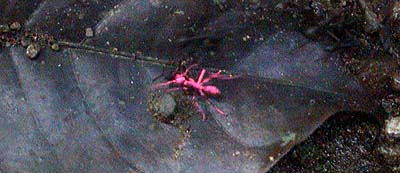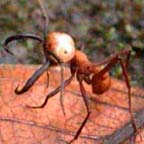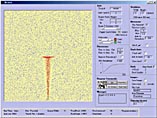|
|
home | |
|
|
||
|
Research
Social insects such as army ants are particularly interesting complex systems because they exhibit optimized system-level behaviors that stem from the actions of individuals with limited or no global knowledge of system variables. Army ants effectively locate and retrieve thousands small prey items in a very noisy environment. They have simple rule-sets, and their behavior is robust to drastic variations in substrate and swarm size. Insight gained from understanding these types of biological systems has direct applicability for many current problems in robotics, Internet routing, data-mining and the design of multi-agent autonomous systems. My graduate research uses fieldwork and computer modeling to examine the decision rules that Eciton burchelli army ants use to organize their massive foraging raids. In addition to extending biological knowledge of E. burchelli behavior, my primary interest is in using the army ant model to better understand how simple interaction rules generate complex system-level behaviors. I am also interested in exploring how the movement of data through a system and interaction rates between system components relate to the emergence of system-level patterns and behaviors. E. burchelli colonies can reach a million or more ants with half the colony participating in raids. Raids can cover more than 1000m^2 in a 10-14 hour day, capturing, processing and retrieving to the nest some 3,000 pray items an hour. Colonies are nomadic and have a 5-week bi-phasic lifecycle. In two weeks of the cycle, the colony is completely nomadic, emigrating to a new nest locations every night after foraging. For the field component of my research, I tracked and videotaped
E. burchelli swarms in the Costa Rican rainforest. Analysis
of the swarm videos is yielding detailed, quantitative descriptions
of how individual ants behave within the swarm. These data are
being used to parameterize an individual-based computer model
of army ant swarming. When the model is finished it will also
include existing data from the literature on the energetics of
army ant locomotion, and prey quality and distribution data. This
will permit examination of the impact on colony fitness of the
different behavioral parameters measured from the video data.
Model output will also be compared for accuracy with extensive
field data on E. burchelli swarm dynamics. |
||


